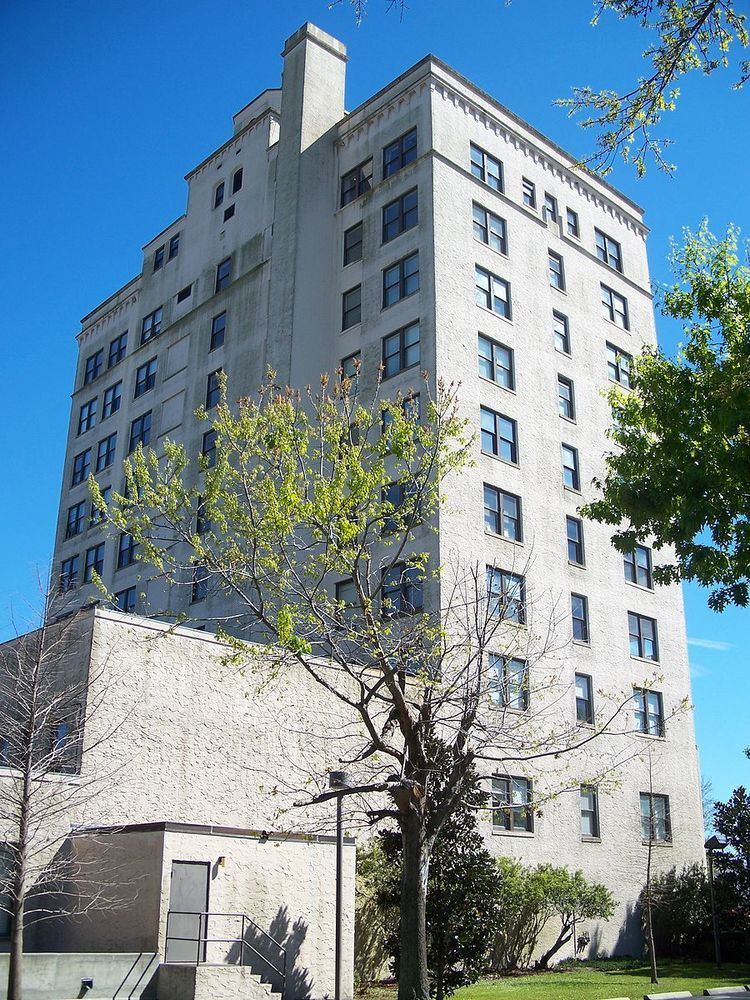Nationality American Name Rudolph Weaver | Occupation Architect Role Architect | |
 | ||
Structures Rolfs Hall, Infirmary, Murphree Hall, Norman Hall, Ben Hill Griffin Stadium Similar People Samuel Sloan, Peter Henry Rolfs, Ben Hill Griffin - Jr | ||
Rudolph Weaver (April 17, 1880 – November 10, 1944) was an American architect, university professor and administrator renowned for various buildings that he designed in Florida, Idaho and Washington, many of which are academic.
Contents
Early life, work and education
Weaver was born in Johnstown, Pennsylvania, the son of Henry Weaver and his wife, Sara Jane Barnhart. Before college he worked as a bookbinder, printer and steelworker. He attended Pennsylvania State College for the year 1902-03 and then went to Drexel Institute where he received a diploma in architecture in 1905. He continued his study of architecture at Columbia University from 1906 to 1907, and at the atelier of Henry Hornbostel of the Society of Beaux-Arts Architects in 1907. He later received a Bachelor of Science degree in engineering from Drexel in 1919.
Illinois
From 1909 to 1911, Weaver was an instructor in architecture at the University of Illinois.
Washington
From 1911 to 1923, he was the first chairman of the architecture department at what is now Washington State University in Pullman, Washington, and was the first architect for the institution. He designed seven buildings, including:
Idaho
From 1923 to 1925 he held the same positions at the University of Idaho in Moscow, Idaho, where he did the campus plan and in 1923 designed the Science Building, now Life Sciences South.
Florida
From 1925 until his death in 1944 he was founding dean of University of Florida's College of Architecture. During that time he was also the architect for the Florida Board of Control, which governed the state's three institutions of higher education and the Florida School for the Deaf and Blind. As board architect, Weaver succeeded William Augustus Edwards, the first architect to the board, and continued designing buildings in the Collegiate Gothic style begun by Edwards. Among the buildings he designed are:
Gainesville
St. Augustine
Tallahassee
FAMU
Florida Agricultural and Mechanical College (Florida A&M University)
FSU
Florida State College for Women (Florida State University): Campus buildings designed by Rudolph Weaver include:
Marriage
On August 22, 1922, Rudolph Weaver married Alice Rossing Walden.
Death
Rudolph Weaver died in Gainesville in 1944 and was buried in Evergreen Cemetery. His wife, Alice, died on July 26, 1960, and was buried next to him.
Honors
Rudolph Weaver Hall at the University of Florida was named for him, but is now called Fine Arts Building A and houses the UF Architecture & Fine Arts Library. There is also a Weaver Residence Hall, which some UF sites say was named for him, while others say it was named for his wife, Martha. Since his wife was named Alice and survived him, it appears that the first version is correct.
